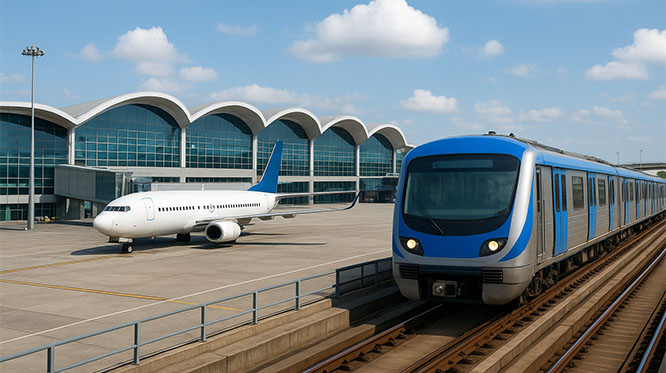
Nearly a week after a giant cargo ship—Ever Given remained stuck in Egypt’s Suez Canal, salvage teams have finally succeeded in freeing it from the busiest waterway in the world, said a report. The Ever Given is 400m-long (1,312ft) and weighs 200,000 tonnes, with a maximum capacity of 20,000 containers. It is currently carrying 18,300 containers.
A Bloomberg report said, “While the ship is floating again, it wasn’t immediately clear how soon the waterway would be open to traffic, or how long it will take to clear the logjam of more than 450 ships stuck, waiting and en route to the Suez that have identified it as their next destination.” Also Read - Dia Mirza 'Makes Memories' With Vaibhav Rekhi And Daughter Samaira in Stunning Pics From Maldives
A large container ship, ‘Ever Given’ remains stuck in Egypt’s Suez Canal, the busiest waterway in the world. The ship which is is almost as long as the Empire State Building is tall, a vessel named the ‘Ever Given’, ran aground after strong winds and a sandstorm caused low visibility and poor navigation, the Suez Canal Authority said in a statement. The ship was en route to the Dutch point of Rotterdam when it was knocked off course, CNN reported. Also Read - Banke Bihari, Mathura to Shiva Temple in Ujjain: Here's How India is Celebrating Holi
The Suez Canal accounts for about 30 per cent of global container ship traffic each day. The report said if the Ever Given isn’t freed soon, the logjam could impact the oil market, shipping and container rates, leading to a rise in the cost of everyday goods.
BBC reported that a giant container ship remains stuck across Egypt’s Suez Canal after attempts to dislodge it on Saturday’s high tide failed.
Canal officials said, however, that some progress had been made, and that they hoped the ship could be afloat again by Sunday evening.
The Ever Given has been wedged in the canal — one of the world’s busiest trade routes — since Tuesday, BBC said. More than 300 ships are stuck on either side of the blockage. Some vessels have had to reroute around Africa.
On why the Suez Canal is so important, BBC said about 12 per cent of global trade passes through the 193 km (120-mile) canal, which connects the Mediterranean Sea to the Red Sea and provides the shortest sea link between Asia and Europe.
An alternative route, around the Cape of Good Hope on the southern tip of Africa, can take two weeks longer.
According to data from Lloyd’s List, the blockage is holding up an estimated $9.6 billion of goods each day — or $400m an hour.
BBC reported that on Saturday about 20,000 tonnes of sand was dredged, and 14 tugboats pulled and pushed the Ever Given in order to try to dislodge it.
Although strong tides and winds complicated efforts to free the ship, the tugboats managed to move it 30 degrees in two directions.
General Osama Rabie, Chairman of the Suez Canal Authority, said that water had started running underneath the vessel.
“We expect that at any time the ship could slide and move from the spot it is in,” he told a press conference.
Initial reports said the 400m-long (1,300ft), 200,000-tonne vessel ran aground due to high winds and a sandstorm that affected visibility.
However, Rabie said weather conditions were “not the main reasons” for the ship’s grounding.
“There may have been technical or human errors,” he told reporters, without giving details. “All of these factors will become apparent in the investigation”, BBC reported.
The Ever Given is operated by the Taiwanese firm Evergreen Marine and owned by Shoei Kisen of Japan. Yukito Higaki, president of Shoei Kisen, said on Friday that the ship did not appear to be damaged.
BBC said if digging the sand away and pulling the ship with tugs fails to move it, Rabie said rescue teams might have to remove some containers.
John Denholm, president of the UK Chamber of Shipping, earlier told the BBC that transferring the cargo to another vessel or the canal bank would involve bringing in specialist equipment, including a crane that would need to stretch more than 60m (200ft) high.
“If we go through the lightering process, I suspect we’re talking weeks,” he said.








Comments
Add new comment